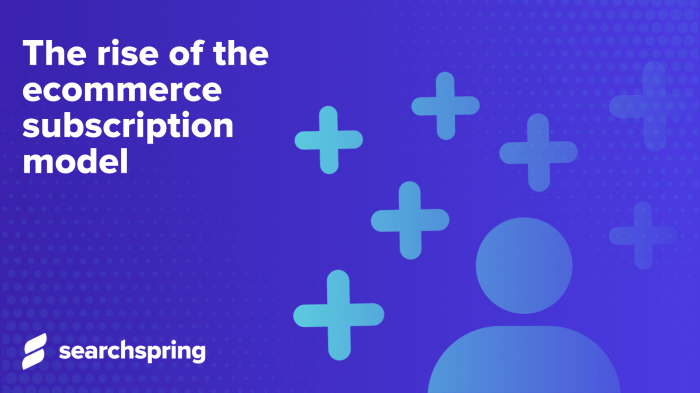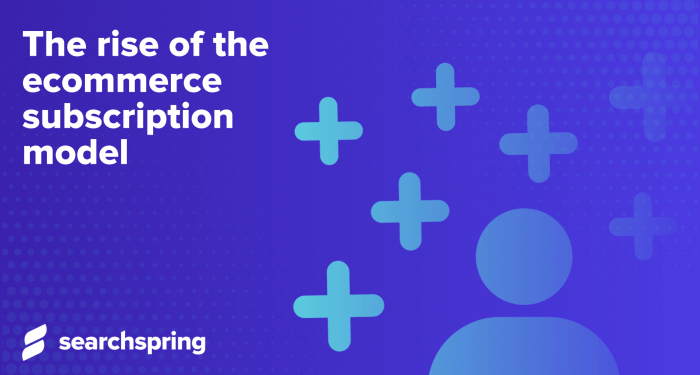Exploring the dynamic landscape of ecommerce, the emergence of subscription-based models has revolutionized how businesses engage with customers. This article delves into the evolution, benefits, types, challenges, and considerations of subscription-based ecommerce models, shedding light on this innovative approach to online retail.
Introduction to Subscription-Based Ecommerce Models
Subscription-based ecommerce models refer to a business model where customers pay a recurring fee at regular intervals to access products or services. This model offers convenience and personalized experiences to customers while providing businesses with a predictable revenue stream.
Over the years, subscription-based ecommerce has evolved significantly, with many companies adopting this model to build loyal customer bases and drive recurring revenue. The rise of digital technology and changing consumer preferences have contributed to the popularity of subscription-based services across various industries.
Examples of Successful Companies Using Subscription-Based Ecommerce
- Netflix:The streaming giant offers subscription-based access to a wide range of movies, TV shows, and original content, allowing customers to enjoy unlimited entertainment for a monthly fee.
- Birchbox:This beauty subscription box service delivers personalized beauty products to customers every month, creating a unique and convenient shopping experience.
- Amazon Prime:Amazon's subscription service provides members with benefits such as free shipping, exclusive deals, and access to streaming content, enhancing customer loyalty and driving repeat purchases.
Benefits of Subscription-Based Ecommerce

Subscription-based ecommerce models offer a range of benefits for both businesses and consumers, revolutionizing the way products are bought and sold online.
Advantages for Businesses and Consumers
For businesses, subscription-based ecommerce models provide a steady and predictable revenue stream, allowing for better financial planning and forecasting. By securing recurring revenue, businesses can also build stronger customer relationships and brand loyalty. On the other hand, consumers benefit from the convenience of receiving products regularly without the need to repeatedly place orders.
This saves time and effort, creating a seamless shopping experience.
Enhanced Customer Loyalty
- Subscription models foster a sense of exclusivity and personalization, making customers feel valued and appreciated.
- Regular interactions with the brand through subscription deliveries create a strong bond between the customer and the business.
- Customization options in subscription services allow customers to tailor their orders to fit their preferences, increasing satisfaction and loyalty.
Revenue Potential Comparison
- Subscription-based ecommerce models typically have higher customer lifetime value due to recurring purchases.
- Businesses can forecast revenue more accurately with subscription models, leading to better financial stability.
- Traditional ecommerce relies on one-time transactions, while subscription models ensure continuous revenue flow.
Types of Subscription-Based Ecommerce Models
Subscription-based ecommerce models come in various forms to cater to different industries and consumer needs. These models offer a recurring revenue stream for businesses while providing convenience and value to customers.
Box Subscriptions
Box subscriptions involve sending curated or customized boxes of products to customers on a regular basis. These boxes can contain anything from beauty products to snacks to books, providing a surprise element for subscribers.
Product Replenishment
Product replenishment subscriptions are based on replenishing essential items regularly, such as toiletries, vitamins, or pet supplies
Membership Models
Membership models offer exclusive access to products, discounts, or content in exchange for a subscription fee. This type of model is common in industries like fashion, streaming services, and online communities.
Industry Examples
- Beauty Industry: Birchbox offers beauty box subscriptions with personalized products for customers.
- Food Industry: Blue Apron delivers meal kits with fresh ingredients and recipes to subscribers.
- Fashion Industry: Stitch Fix provides personalized clothing selections based on individual preferences through a subscription model.
- Software Industry: Adobe offers subscription-based access to its creative software through Adobe Creative Cloud.
Challenges and Considerations in Implementing Subscription-Based Models
When transitioning to a subscription-based model, businesses often face various challenges that need to be carefully considered to ensure a successful implementation. Pricing strategies, customer retention, and overall business sustainability are critical factors that require attention.
Common Challenges Faced by Businesses
- Initial Revenue Hit: Transitioning from one-time sales to a subscription model can result in a temporary decrease in revenue as customers shift from making large upfront payments to smaller recurring payments.
- Customer Acquisition Cost: Acquiring new subscribers can be costly, especially in a competitive market where customer acquisition costs are high.
- Customer Churn: Keeping subscribers engaged and preventing them from canceling their subscriptions is a constant challenge for businesses operating on a subscription model.
- Flexibility and Adaptability: Adapting to changing market trends and customer preferences requires flexibility and agility, which can be challenging for businesses with rigid subscription structures.
Key Considerations for Pricing Strategies
- Value-Based Pricing: Aligning the subscription price with the perceived value that customers receive can help justify the cost and increase customer satisfaction.
- Tiered Pricing: Offering different subscription tiers with varying features and benefits can cater to a wider range of customers and increase revenue opportunities.
- Free Trial Periods: Providing a free trial period can encourage potential customers to try the service without commitment, potentially leading to higher conversion rates.
- Discounts and Promotions: Using discounts and promotions strategically can attract new customers and retain existing ones, contributing to overall revenue growth.
The Importance of Customer Retention Strategies
- Personalized Customer Experience: Tailoring the subscription experience to individual customer preferences can increase satisfaction and loyalty, reducing churn rates.
- Engagement and Communication: Regularly engaging with customers through personalized communication and content can strengthen the customer-business relationship and improve retention rates.
- Feedback and Improvement: Collecting feedback from subscribers and continuously improving the subscription service based on their input can enhance customer satisfaction and loyalty over time.
- Rewarding Loyalty: Implementing loyalty programs and rewards for long-term subscribers can incentivize continued subscription and increase customer lifetime value.
Ending Remarks
In conclusion, the rise of subscription-based ecommerce models signifies a shift towards personalized and recurring revenue streams in the digital realm. By adapting to changing consumer preferences and market trends, businesses can harness the power of subscriptions to foster lasting relationships with their audience and drive sustainable growth in the competitive ecommerce landscape.
Questions Often Asked
What are the key benefits of subscription-based ecommerce models?
Subscription-based models offer businesses predictable revenue streams and foster customer loyalty through personalized experiences and convenience.
How do different industries leverage subscription-based models?
Various industries, from beauty to food, utilize subscription models to offer curated products, simplify replenishment, and build ongoing relationships with customers.
What are the common challenges in implementing subscription-based models?
Businesses often face hurdles in pricing strategies, customer retention, and adapting to changing market dynamics when transitioning to subscription-based ecommerce.



